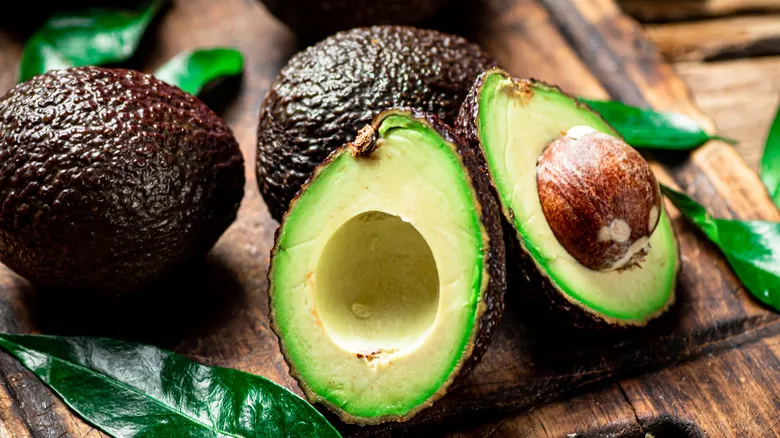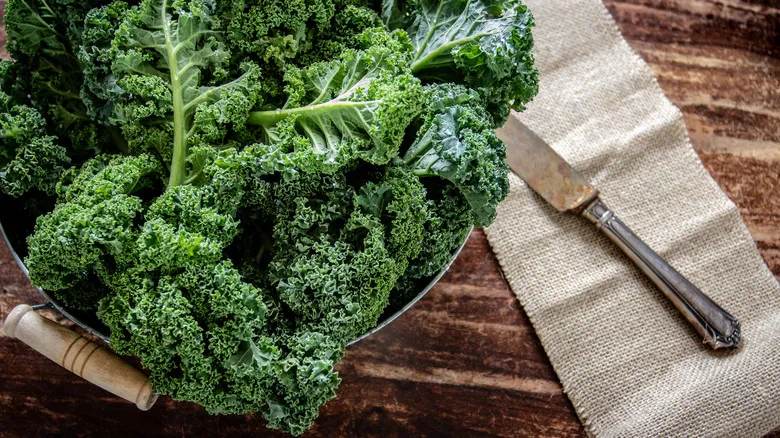Storing kale in the fridge

Kale can be kept in the refrigerator either whole or in pieces. For whole bunches, wrap each one in a couple of paper towels or a kitchen towel, then place the bundle in a zip-top bag. Store the bag in the crisper drawer with the kale stems facing the back of the fridge. Every three days, replace the towels to prevent moisture buildup. Using this method, kale should remain fresh for about a week. For longer-lasting whole kale, you can also wrap it tightly in aluminum foil instead of (or in addition to) towels. While results may vary, this can help keep the kale crisp and green for up to two weeks.
To store kale in pieces, wash and rinse each leaf before either tearing them from the stems or using kitchen scissors or a paring knife. Thoroughly dry the leaves using a salad spinner or by rolling them up like a burrito in kitchen or paper towels. Apply gentle pressure until all moisture is absorbed. You can then wrap the leaves in kitchen towels and place them in a zip-top bag in the crisper drawer for up to a week. Regardless of how carefully you store your greens, watch for signs of spoilage, such as faded color, wilted leaves, a mushy texture, or any mold or unpleasant odors.
Storing kale in the freezer

If you find yourself with more kale than you can use for several weeks, consider freezing it. When done properly, freezing can preserve kale for up to six months while maintaining its nutrients, color, crispness, and flavor. Although the freezing process involves more steps than simply storing it in the fridge—such as cooking and blanching the kale—the results are definitely worth the effort.
Begin by separating the leaves from the stems of the kale. Bring a large pot of water to a boil and prepare a medium to large bowl filled with ice water. Blanch the kale leaves in the boiling water for about one to two minutes, or until their color brightens. Afterward, drain the leaves using a colander, ensuring they are thoroughly dried, and spread them out on a rimmed baking sheet without stacking them. Place the baking sheet in the freezer and allow the leaves to freeze solid for two to three hours. Once frozen, you can transfer the kale to a freezer-safe zip-top bag, where it can be stored for up to six months. There's no need to thaw the kale; you can add it directly from the freezer to your blender or a pot of soup, treating it just like fresh kale.
While it is possible to freeze kale without blanching, keep in mind that blanching helps deactivate the enzymes that can diminish its color, flavor, texture, and nutrient content. If you opt not to blanch, be sure to use the kale within a month.
Recommended

Why You Should Never Store Avocados In Water

How Long Tofu Still Tastes Good After Opening

The Easy Hack To Keep The Temperature Down In Your Cooler

How Vikings Stored Their Bread And Why It Worked
Next up

